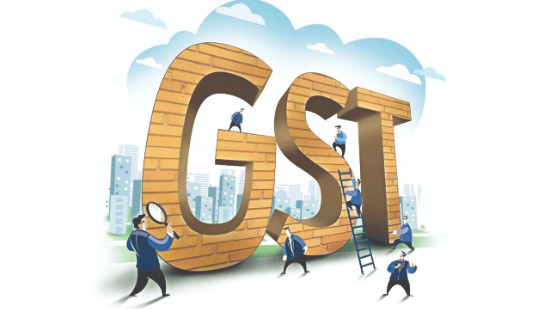Expanding the frontiers
A simplified and less frequent GST return filing format is at the core of reforms but that has to come through steady, unhurried steps

After more than three and half years down the line, Goods and Services Tax (GST) still seems to be in the early mutative stage. At least the spate of recent changes indicate so.
Reversing the gear, the initial over-indulgent registration process has lately given way to cancellation drive for those neo-registrants — believed to be spurious and created to give rise to a fake input tax credit (ITC) with an eye to evade tax. The days of strict scrutiny are back where Aadhar, as an enabling tool, is put to do the screening exercise.
Apart from this, certain ad hoc measures like temporary suspension of registration and credit-capping to an extent of 99 per cent of the output tax liability have been thought of in view to keep a tab on the possible misuse of ITC. And finally, the return of e-way bills as an additional compliance measure almost wraps the new system in its old flavour.
The standard operating protocol remains largely the same as in the earlier regime. The shell firms mushroom in alarming propensity, act as invoice mills, and pass on hoax ITC to a large number of beneficiaries, whose identities remain clouded to the tax authorities. They have now spread their nasty tentacles at a pan-India level and are not confined within state boundaries. Tax regulators go after cases of fraud, mostly ITC-related, on a one-off basis with little systemic check in place.
Not long ago, CAG pulled the GST regime upon turning the much-vaunted invoice-matching system into a veritable non-starter. Experts believe that poor tax mobilisation in the GST regime and system-related glitches in the early days could be attributed to this.
So, what ails GST in India? The success of any value-added tax system, including GST, would necessarily hinge on the seamless ease of passing on the tax credit to the value chain and its fidelity quotient. The GST authorities, however, had also to ensure an easy compliance regime.
Keeping the return format simple and less frequent was important. The original idea was to have a single supply statement in GSTR-1, making way for auto-population in GSTR-2 for the recipient and to the eventual evolution of return in GSTR-3.
The initial glitches created an unwelcome uproar and resistance in the market, which virtually forced GSTR-2 and GSTR-3 to make a hasty retreat in favour of a summary return in GSTR-3B, bringing about the initial snap in the chain. In the hindsight, that was perhaps the tempting call for the tax-racketeers to tread into the chain and spawn shell firms.
Several attempts were made thereafter to make a real-time connection amongst the subsequent return variants. The recent one is to connect GSTR-1 with the same stop-gap variant of 3B.
One vital feature of the informal sector that dominated the Indian economy was the fact that around 10 per cent of the enterprises contribute 90 per cent of the indirect tax. The procedural safeguards meant for the remaining marginal players hit the abiding taxpayers hard and disappointed the business environment.
Quarterly Return Monthly Payment (QRMP), again a piecemeal approach, was aimed primarily to regulate the marginal players by lessening the periodicity of returns while an attempt was made to maintain the flow of tax credit down the value chain, through a monthly payment.
It has become increasingly evident in the past few years that the inherent recipe of an efficient tax system in the present context would be to ensure the coupling of transactions in the value chain through auto-population in returns.
The recent introduction of the e-invoicing concept in B2B transactions aims to integrate back the process further with the single point exercise of generating GST invoice for transactions and conveying the same to the Invoice Registration Portal (IRP) with the creation of a unique Invoice Reference Number (IRN). The scheme is expected to facilitate standardisation of invoicing process and bring in interoperability in the GST ecosystem towards implementing in situ invoice-matching process.
The one-time generation of B2B invoice would then populate all kinds of returns and statements that follow, including that of e-way bills. It will eventually act as a major catalyst for an easy compliance regimen as it will spare the taxpayers from the rigours of filing regular returns separately, which being repetitive in nature and with high periodicity, become a major irritant for serious businesses.
On the revenue front, this will allay a lot of system-driven glitches in a single stroke. Right from ensuring complete transaction level trail in the system to the real-time matching of input credit and output liability, all these would make fake invoicing few and far between.
Similarly, the mandatory incorporation of Harmonised System of Nomenclature (HSN) in invoices to uniquely identify goods with globally accepted numeric; and Services Accounting Code (SAC) for the nature of services would lead to an increased fidelity quotient in the consumption value chain. Such substantive reforms are indeed game-changers in the domain of indirect tax systems. For the purpose of steady adaptability, the initial compliance level threshold is kept at Rs 50 crore of annual turnover for the e-invoicing.
Learning from the past, instead of pushing big, technology-intensive reforms, especially through a vast uninitiated sector in India, steady, unhurried steps should be taken first. The ambit of these reforms can be widened in phases by lowering the threshold turnover to bring in more stakeholders under its fold. This is how GST is going to help expand the frontiers of the formal economy in India in the long term.
The writer is Joint Commissioner (GST), West Bengal. Views expressed are personal



